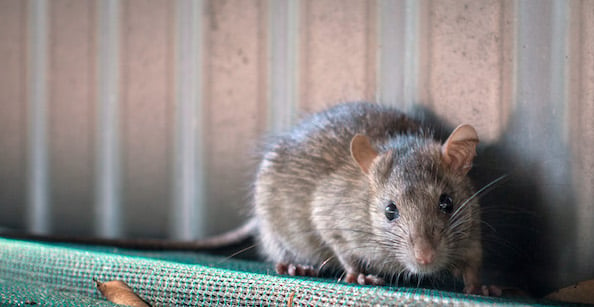
Liphatech: A Pioneer in the Field of Rodenticides
In this feature, we turn the spotlight onto some of the key companies within our industry. In this edition, we look at global rodenticide manufacturer Liphatech.
Successful rodent control needs to follow a process, starting with a thorough inspection. Understanding the behaviour of rats and mice is essential in designing and implementing a rodent control program. But preventing recurring rodent problems requires to both remove food sources attracting the rodents and exclude rodents from the building.
Dr Bobby Corrigan, a globally recognised rodentologist, shares his 6 Steps towards great rodent control.
The AEPMA Code of Best Practice for Rodent Management is also a useful reference document.
As with any pest problem, a thorough inspection is required when investigating a rodent problem. Understanding which rodent species is present, where they are nesting, how they are entering the building and an estimate of numbers are essential information to design a suitable rodent control program. Check out our inspection tips for rodent control.
The three species of pest rodent the roof rat, brown rat and house mouse all have different behaviours which pest managers need to be aware of. Even understanding basic anatomy can be useful (Rat anatomy). Of particular use in inspections is understanding what the different rodent droppings look like.
More information on rodents.
With rodents able to squeeze through small gaps, rodent proofing a building can be a challenge. Keep the perimeter of the building clear of vegetation is a great start, as rodents don’t like to cross open spaces. Trimming back any branches that overhang the roof is important to prevent easy access for roof rats. Then it’s necessary to seal up all the small gaps that rodents can squeeze through. This article on rodent proofing in commercial accounts, provides a good overview as to what is required.
It’s important not to forget the reason why rodent control is important – they carry a range of parasites and can spread disease. Perhaps the most famous disease associated with rodents is the plague or black death, which is cause by a bacteria spread from a flea that lives on rats. More commonly in residential situations a rodent infestation can lead to problems with rat mites. Other diseases such as Leptospirosis can be spread through rodent urine and eating contaminated food. Another potential route in picking up diseases associated with rodents is when cleaning up after a rodent infestation.
Disposing of dead rodents should always be carried out when wearing gloves and the body should be placed in a bag and sealed before placing in the bin. However, one of the biggest issues in rodent control is cleaning up after a rodent infestation – when sweeping up rodent droppings there is a significant risk in inhaling dust which carries bacteria which can lead to infection. Follow these tips on cleaning up after rodents.
Articles on rat bait and mouse bait, and mouse traps and rat traps and other rodent research.

In this feature, we turn the spotlight onto some of the key companies within our industry. In this edition, we look at global rodenticide manufacturer Liphatech.
In our latest Pest Pulse survey we asked pest managers to name their go-to products and preferred actives when it comes to rodent control.

In this feature, we turn the spotlight onto some of the key companies within our industry. In this edition, we look at rodent control specialist Bell Laboratories.
The active ingredient brodifacoum has stood the test of time, showing excellent performance in Talon wax blocks back in the 1970s and today in the form of Talon XT Pro blocks.

Jay Turner recounts some of his most memorable rodent jobs, the ones that put his pest management knowledge to the test.

A label update gives pest managers greater freedom to use two of Bell Labs’ popular rodenticide products.

Europe has seen a shift in attitudes – and legislation – when it comes to rodenticides. Steve Broadbent, regional director of Ensystex looks at the possible implications for us here in Australia.
Liphatech has a long reputation for delivering solutions that meet pest managers’ needs.
Queensland authorities are making bold strides towards banishing pest rodents from the barrier reef islands.

Do you know the safest way to clean up after a rodent infestation? Andy Knox from Bell Laboratories provides some helpful tips.

The Ratsense digital surveillance system records real-time rodent activity, taking the guesswork out of rodent management – which leads to both time and cost savings for pest managers.

After seven long and challenging years, the world’s largest and most ambitious rodent eradication has been declared an international success. (Main photo credit: Tony Martin)